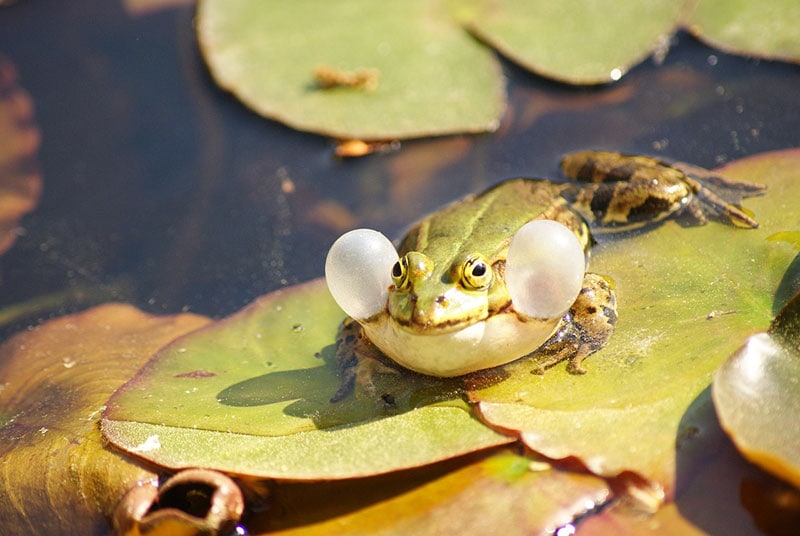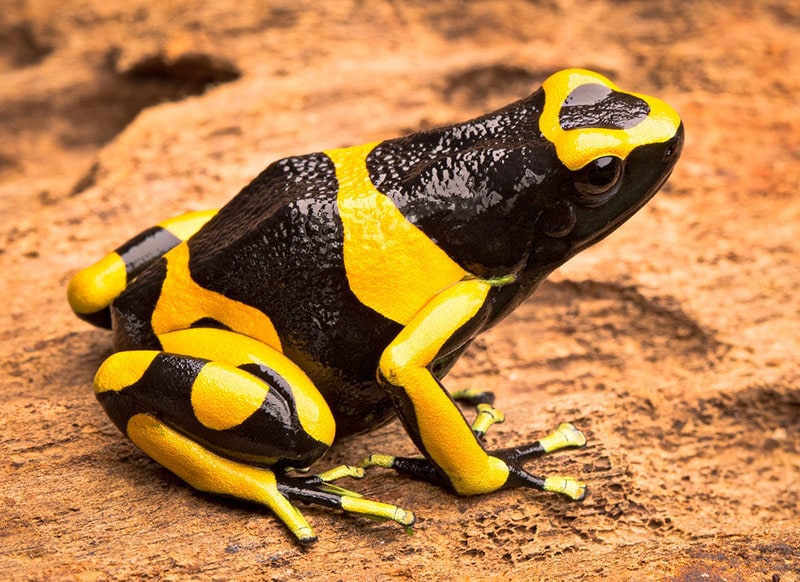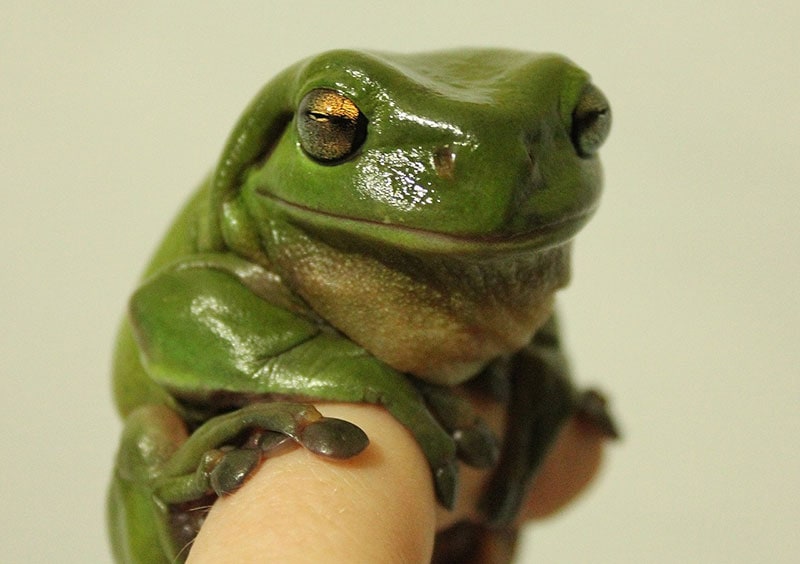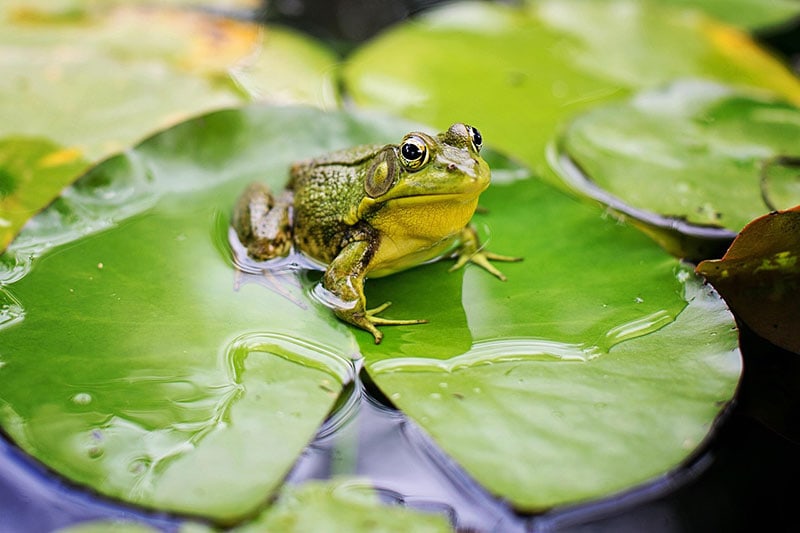How to Tell If a Frog is Male or Female: 6 Vet-Reviewed Factors & FAQ
Updated on

Sexing frogs depends largely on the species. Different species of frogs exhibit their sex differently. However, there are some commonalities between most species that can help you sex most frogs.
There isn’t always one clear determining factor that makes it easy to determine if a frog is male or female. Instead, you’ll have to look at several different physical features and take them all into account before determining a sex.
Below, we’ll go through several different ways to determine the sex of a frog.
How to Tell If a Frog is Male or Female
1. Croaking
Male frogs typically croak, while females do not. By croaking, males call females to mate. Females often determine which male to breed with through these calls. However, the females themselves don’t do much croaking.
Females can absolutely make noise. However, they don’t do it nearly as much as males. If you hear or see a frog croaking for hours at night, it’s probably a male.
2. Vocal Sacs
To aid in their croaking, most frog species have vocal sacs that expand when they croak. Females don’t have these, as their croaking is far less important. You’ll likely be able to see these vocal sacs expanding when the male is calling.
You may also see them when the male isn’t calling, depending on the species. When the male isn’t calling, the underneath of their chin may look like a baggy, thin sack. This skin may even be a different color than the rest of their body, making it pretty obvious.

3. Size
In most species, males are smaller. While this isn’t always true, it’s true often enough for it to be a good indicator. This makes sense as females have to carry the eggs. Bigger females can carry more eggs, which may translate to more offspring. Male frogs aren’t often as territorial or aggressive as other animals, so being bigger doesn’t necessarily translate to breeding rights.
Sometimes, the difference isn’t very obvious (making it a poor indicator). However, other times, the females may be as much as three times larger than the male.
With that said, in species where males do fight each other, the males may actually be the bigger sex. It helps to know what species you’re looking for, in this case.
4. Hand Differences
Males often have rougher hands, and there may be small colored patches, especially near the thumb. However, these differences can be difficult to see. You often don’t get close enough to the frog for it to become obvious.
In some species, the differences become more pronounced during the breeding season. The patches may become more darkly colored and raised. With that said, in some species, the female has hand or foot adornments. These are often “fringe” along the edge of the frog’s foot that it utilized for laying eggs. It’s practical, not just showy.

5. Skin Texture
Sometimes, males have rougher skin than females. Occasionally, they’re even a bit spiky. In many cases, you can spot the roughness through vision alone. Males may be visually bumpy.
Of course, this varies from species to species. Some frog species don’t show any difference in the skin between different sexes.
6. Size of the Ears
Practically all frogs have ears that look like disks on the side of their head. These are sometimes a different color than the surrounding skin, making them easier to see. Male frogs often have ears that are larger than their eyes, while females have ears that are smaller or the same size.
Therefore, this is sometimes a decent indication to consider.

FAQ
Can Frogs Be Hermaphrodites?
There is a lot of confusion around frog sexes. However, generally, all frogs are either male or female. They cannot be both. Male frogs have two ZZ chromosomes, making them male. On the other hand, females have one W chromosome. These genetic differences determine the sex of a frog—just like for humans.
Frogs are not naturally known to turn from one gender to the other. However, studies have found that some chemicals used by humans, like pesticides, can trigger a sex change.
In fact, atrazine has been found to chemically castrate most male frogs exposed and turn as many as 10% of them into females. The male frogs affected are missing testosterone and everything that testosterone controls—including sperm.
The frogs that “turn” into females are still genetically male, though. Therefore, all of their offspring are male, as they don’t have any W chromosomes to pass on. In some areas, these genetically male frogs can wipe out whole populations, as they seriously mess up the gender ratio.
In some cases, tadpoles exposed to pesticides and other chemicals end up developing both male and female reproductive organs.
Are Green Frogs Male or Female?
Frogs often don’t have obvious color differences between sexes. Therefore, a green frog could be a male or female. You’d have to take a look at other indications of sex, like the ones we discussed above.
There are many green frogs that are male and many that are female.

Do Female Frogs Croak?
Female frogs can croak—and they absolutely do sometimes. However, they don’t call for a mate. The males do that. Therefore, they don’t croak nearly as much or as loud. They also won’t croak all night, though they may search for a croaking male at night.
You can sometimes determine sex by whether or not a frog is croaking. However, this isn’t as sure of a sign as others. Plus, many frogs quit croaking when they see someone nearby. Therefore, just because a frog is croaking doesn’t mean that it’s a male. Just because a frog isn’t croaking doesn’t mean it’s a female.
Final Thoughts
Sexing frogs isn’t terribly difficult. The signs do differ a bit from species to species. However, generally, they’re very similar. Males tend to be smaller, while females are larger. Males also tend to have rougher skin, though this is less of an indicator. Males spend much of the breeding season croaking, as that’s how they call a mate. On the other hand, females can croak, but they don’t do it as often.
Because they croak so much, males have vocal sacs. These can be seen when they croak, as well as when they aren’t croaking.
Featured Image Credit: audiznam260921, Shutterstock











